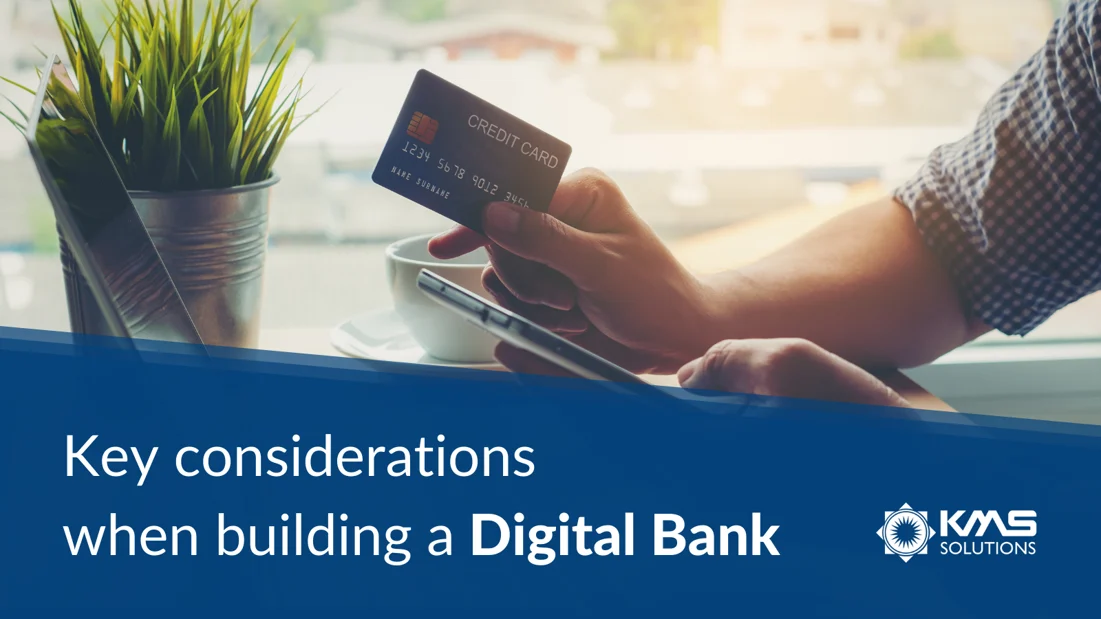Building a truly digital operating model remains a challenge for most domestic banks. While it’s true that there is no such thing as a sure recipe for success, there are key ingredients that are essential to a successful digital bank. They are the 7 imperatives of digital banking that we will discuss in this article. Hope they represent a reference framework for banks to take as an example.
Customer Centricity
Customer-centricity is the first pillar of the digital banking model. To engage today’s digital-savvy customers, banking leaders have become invested in effortless convenience. They design new products and services in ways that satisfy unmet customer needs, reduce friction in the process, and encourage digital interactions. The goal is to enable customers to use banking services as effortlessly as possible.
Electronic Know-your-Customer (eKYC) is a prime example of customer-centricity, where banks let customers create new accounts with only a few facial scans, sparing them the inconvenience of having to visit physical branches.
Moreover, excellent user experience (UX) and user interface (UI) are no longer differentiating factors. They are now the prerequisites for banking solutions such as digital apps like mobile apps or web apps. The need for these customer-centered solutions is the reason why more banks are applying modern methods such as Human-centric design, Lean Startup Approach, Agile, and DevOps.
When it comes to customer-centricity, banking businesses need to pay attention to these factors:
Low friction app downloads and rapid onboarding. Having an internet connection, customers should be able to verify their identity and thus create a new bank account in a matter of a few minutes. It has become an industry standard that opening a digital banking account must not take more than five minutes.
Engaging user experience. With well-designed mobile banking applications, customers can effortlessly use banking services and keep track of their spending behavior anywhere and at any time.
Value-added services. Complimentary services such as Personal Finance Management (PFM) and digital marketplace can offer a richer and personalized user experience. Once these services are integrated into the banking app, customers can save time and effort searching for other providers. Also, with these integrated services, the mobile application can be seen as a financial lifestyle platform.
Operating Model and Ecosystem
A truly digital bank would build proprietary digital operations and ecosystems to create its own way of working. Banks that lack these proprietary assets run a major risk: their model will be copied and their business will be replaced by digital challengers such as neo-banks and fintech startups. To build a digital operating model, banks should think of it as an end-to-end digital system that brings a fully digitized experience for both external customers and internal employees.
In this model, employees are provided with automated processes to carry out their tasks:
- Credit card risk assessment: fully automated and enabled by AI
- Straight through processing: the end-to-end transaction process is automated
- Transactions Reconciliation: instant across financial accounts
- Product manufacturing: product development is digitized
- Product Integration: APIs are integrated across products
For customers, they can easily onboard and create new accounts thanks to self-service eKYC software and more:
- Self-service onboarding: focused 100% on user
- Customer data & personalization: customer experience is personalized
- Pricing: pricing models are optimized
- Offers: product offerings are tailored to customer needs
- Channel: all banking services can be accessed via a mobile application.
One best practice is that banks should build their operating system as an ecosystem, where data from all functionalities are gathered and analyzed to build personalized product and service offerings. Some essential types of data are mobile behavior, transaction history, demographics, KYC insights, etc.
Traditional banks should also look at successful neobank(s) as role models. They build an open banking model where third-party products can contribute their products. This way, banks can expand their service offerings without building new ones from scratch. This is considered a fast and cost-effective way to add new banking products, attract customers, and diversify revenue streams.
Another notable trend is that leading banks are applying partnerships to accelerate time-to-market and thus launch new digital products and features. Some of these products include Anti-money laundering (AML)/compliance, personal loans, eKYC, personal finance management (PDM) chatbot.
Tech principles and strategic choices
Unlike digital banks where agile is embedded in their DNA, traditional banks usually find it challenging to change. To build a digital banking model, banks must adopt an agile delivery approach. This includes making strategic choices to build the right technology as their digital foundation.
Banks must effectively manage their IT stacks to facilitate rapid change, thus providing responsive and scalable solutions. With that goal in mind, it requires agile digital applications and digital platforms solution across the business. The ownership and control of these technologies must be well-defined.
Moreover, Cloud has become a key enabler for digital banks. It brings opportunities for banks to experiment with new technologies with limited investment, while at the same time offering reliability and scalability. Cloud offers a high level of innovations, providing modules such as machine learning and artificial intelligence that can be plugged into their current system easily, without much effort.
Regarding tech principles, digital banks share some things in common.
- They use open software, libraries, and framework. The open architecture allows for seamless integration without many bottlenecks.
- Microservices and containerization are applied to make the components reliable, portable, scalable, and maintainable.
- Cloud is an integral part, either it’s public or private cloud.
- Agile development and deployment are a must.
Moreover, banks need to standardize their technology stacks across the systems. Some of the best practices to do so are:
- The bank owns and fully controls the architecture.
- Open source is designed in ways that’s safe to use and govern. Banks should use open source to optimize costs and access a larger developer pool; they can outsource the support and expertise of open source to external vendors.
- To enable developers to self-provision infrastructure, the infrastructure should be virtualized and automated.
- Build vs. Buy needs to be put under careful consideration. Most banks are preferring building or using open source products over buy.
- New banking and financial technology should be actively learned and experimented with while legacy technology is modernized.
- Banks must make their software development lifecycle (SDLC) agile and automated
- Integration must follow industry standards.
Big Data and Analytics
Data & analytics is the framework for informed decision-making, supporting everything from product design to customer service. Applying data & analytics is the first step to creating a personalized and customer-centric experience. With advanced data analytic, digital banks can gain a thorough understanding of customer’s desires and expectations. Based on these customer insights, banks can accordingly adapt their banking services and banking applications to meet customers’ needs. The result is a personalization strategy backed by advanced data & analytic, which has 3 levels:
- Level 1 – Personalize Intelligence: apply advanced data & analytics to transactions, customers, and other data types to establish a deep understanding of customers and their needs.
- Level 2 – Personalize Services: provide services and content that are hyper-relevant.
- Level 3 – Personalize Interactions: build an intuitive interface and engaging experience across all touchpoints.
Banks can build their data & analytics capabilities in-house or partner with third-party providers. While the in-house approach is costly due to the high capital expenditure on data experts and data infrastructure, partnership for data & analytics services is more flexible and cost-effective thanks to cloud technology and the pay-as-you-go pricing model.
Digital Start-up culture and talent
Building a start-up culture that revolves around growth and innovation is the foundation for successful digital banking. But it remains a challenge to do so, particularly due to the fixed mindset and the legacy banking culture.
This model of digital start-up thinking and digital talent requires banks to be agile and responsive so as to build, upgrade, and enhance their products and services. It is therefore essential to have a horizontal culture that can react proactively and flexibly to change.
However, this start-up thinking is likely to create conflicts and frictions, especially for traditional incumbent banks. Therefore, it is imperative to have suitable management executives to direct this journey. Leaders must be comfortable with, if not enthusiastic about customer-centricity and innovation.
It should also be noted that bureaucracy, which seems to be a reality for lots of traditional banks, is not only resistant to this start-up approach but also is detrimental to the digital banking model.
To enable an agile culture, banks need to build a horizontal organization, where the IT team and the operational team are working together in the spirit of high synergy. Recruiting the necessary talents in this competitive marketplace is extremely challenging. Since digital banking is now pervasive, the demand for digital skills has risen. This is why instead of hiring new recruits, some banks choose to outsource some important roles to third-party vendors.
Communication with regulators
Banks cannot move fast if they are restrained by regulatory frameworks. Therefore, they must communicate and work effectively with relevant regulators to ensure that they can transform and innovate without too many limitations and bottlenecks in terms of regulation.
The good news is that regulators and the government are encouraging digital banking. They are willing to assist banks to adopt new technologies to compete and serve better. This is reflected by two actions. The first is that they are cultivating a competitive environment where advantages are offered to banks with innovative products and services. The second is that regulators are urging banks to bring their banking products to the unbanked and underbanked segments.
To effectively unlock the potential that the current regulatory framework offers, banks should consider these factors:
- Profitability: Banks with a compelling case for profitability will convince regulators as candidates for digital banks
- Key differentiation: Since regulators prioritize the unbanked and underbanked segments, they would want to know how banks can differentiate themselves in terms of their proposition and their innovation.
- Adherence to regulation: Although the ability to capture the digital banking opportunity depends on the freedom to innovate and scale, banks must also remain compliant with the regulatory framework.
- Consumer protection: Banks must constantly look for new ways to ensure consumer protection, mitigate cybersecurity risk, and implement robust data protection measures.
Want to deep dive into all essential features of a modern banking application? Read our latest paper “Must-have features for Banking Application“.










